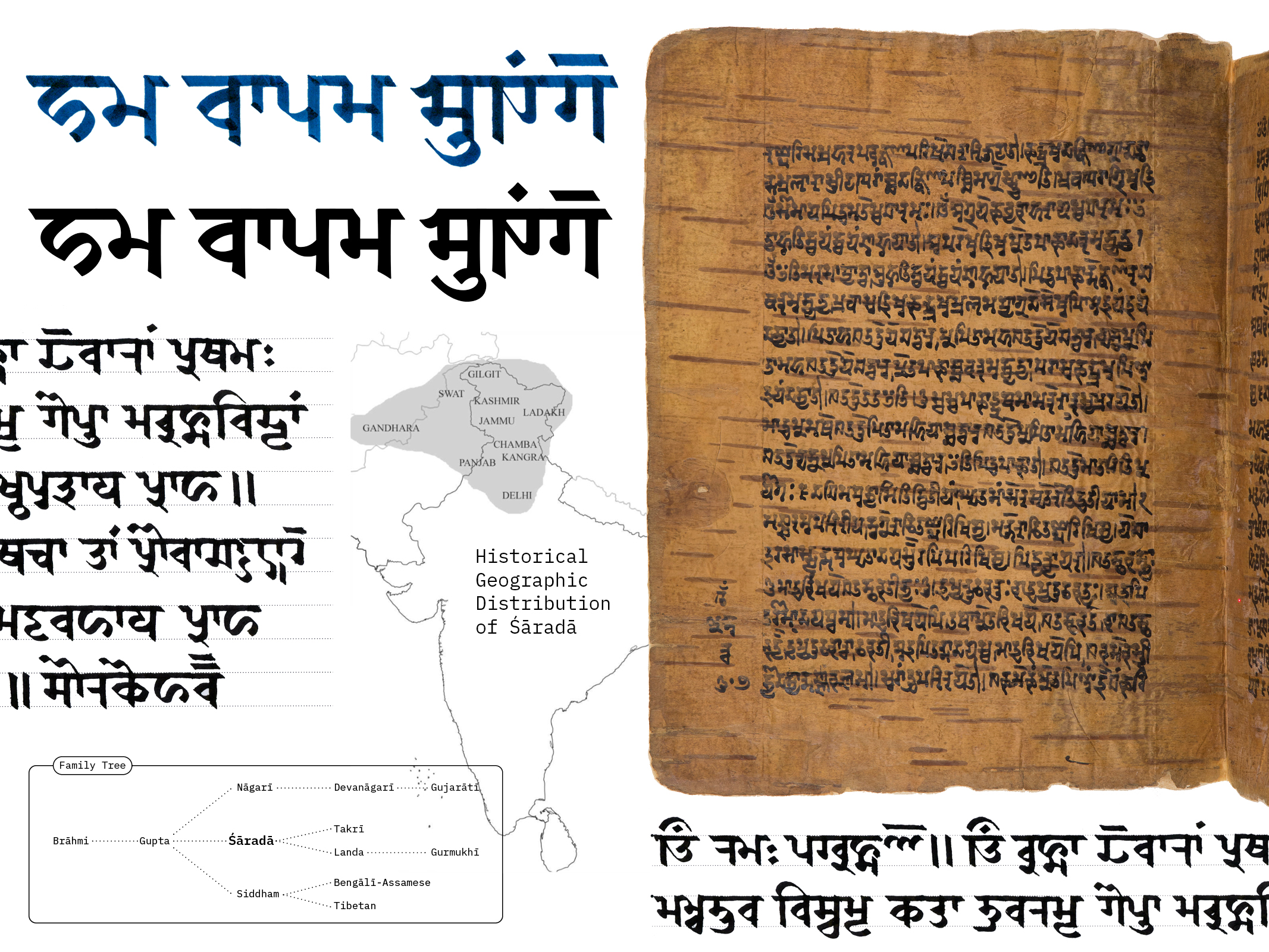Sharada & Latin: One tool, two angles
Parimal Parmar zoomTypefaces for some of Indian scripts — be it traditional or contemporary — evidently suggests the writing flow and tool’s influence on the design of the letterforms. While it’s not the same with typefaces for Latin script we see at present, because of its evolution and the amount it has been explored over the centuries.
This project started out as a revival of one of India’s historical scripts, Sharada, slowly evolved to investigate potential dialogue between this script and the Latin scripts. The aim is to find a suitable traditional calligraphic Latin model that visually matches with Sharada letterforms, without compromising both script’s heritage.
Can a calligraphic sans serif Latin typeface handle large quantities of text with ease?
Can there be a calligraphic serif Latin typeface which suggests the broad nib pens influence and at the same time be a workhorse typeface family?
Can two completely different writing systems from different subcontinent be made to work harmoniously? by having the same visual grammar, without forcing one’s heritage onto the other?
This project seeks to answer these questions, while also helping revive a major historical Brahmi-based script, Sharada, a native script of Kashmir, India. It is believed that the term refers to a traditional Sanskrit name for the Kashmir region, Śāradādeśa or Śāradāmandala. It is the progenitor of a major sub-family of Brahmi and is a sibling of the Nagari and Proto-Bengali families. Sharada was the principal inscriptional and literary script of Kashmir from the 8th century CE until the 20th century. The script was used to write Sanskrit, Kashmiri and other languages of northern South Asia, first as inscriptions on stone, copper and then on other media up till the 19th century. From the 12th century, Sharada was used to write manuscripts of Vedic and classical Sanskrit texts.
In the 19th century, expanded use of the Persian script for writing Kashmiri and the growth of Devanagari, contributed to the decline of Sharada as a medium of education and literary production. At present, Sharada is not used as a principal script in Kashmir. The Kashmiri language itself is now written in the Persian and in Devanagari script, to which new signs have been added in order to represent Kashmiri vowels. Living in exile since the 1990s, the native people of the region, the Kashmiri Pandits, are currently making efforts to revive and bring back the usage of the Sharada script.


